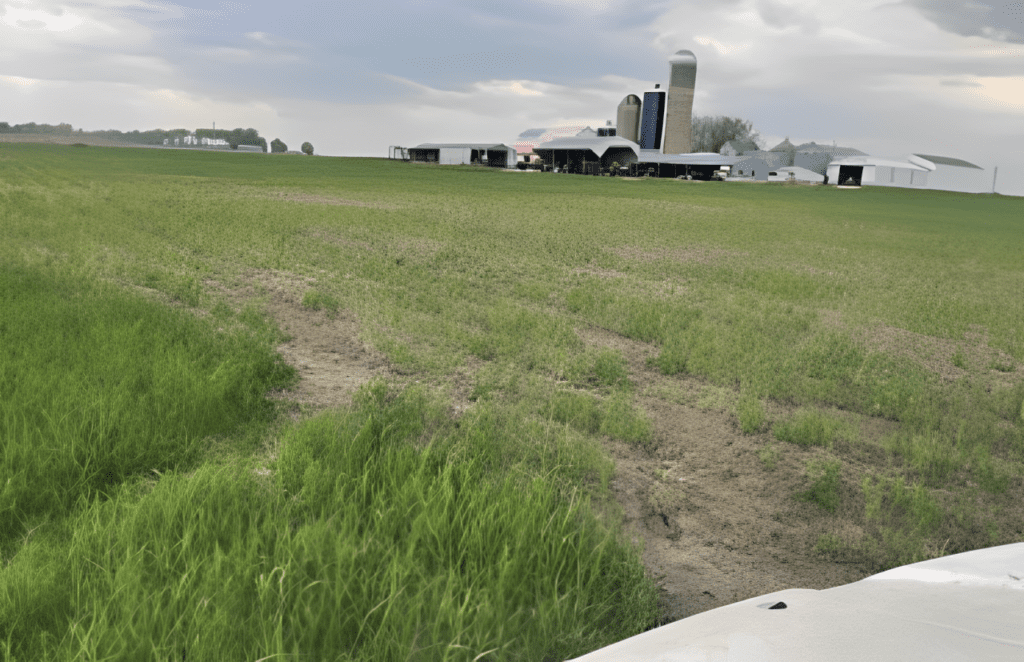Lessons learned from cover crops in 2023
This year has once again provided us with another learning opportunity, and I fear that most of us did not pass the test Mother Nature offered us. I know this is true of myself. I tried to react and adapt much earlier than I normally would have, but the moving target seemed to be more challenging than normal. While we have not yet received our report card for the year, I will try to convey some of my early thoughts as I sit here in mid-July.
My operation is somewhat diversified this year. We have corn, soybeans, and cereal rye. The majority of the cereal rye is grown in the relay-cropping fashion, in which we plant the rye in the fall in twin rows and then plant the soybean in the spring in between the rye. We had to terminate a majority of our relay acres this year due to a dry spell and some of the rye not being the quality we would normally keep.
As in any no-till environment, the cropping season begins with the harvest of the previous crop. If we plant covers into standing crops, it actually begins earlier. Every action we employ in a field affects every successive action or reaction. Acquiring an adaptive mindset is critical. One needs to constantly ask themselves, “What are the signs Mother Nature is offering us?”
We often let one bad experience dictate future actions or opportunities. If we can get comfortable trusting our gut and intuition, combined with historical information — yet yielding to the whimsical attitude Mother Nature seems to be giving us — we would realize that using diverse tactics is critical. Folks often hear us refer to using these multiple options, but as I’ve said several times in the past, “They need to have the answer before the question is asked.”
Adaptations
Here are a couple of things we did this year in response to the external factors we couldn’t control.
First was to terminate early. Normally I am very comfortable delaying termination until well after the next crop is established, but the forecast was dry; we had missed several rain events, and our snow levels over winter just didn’t seem normal. So I committed to terminating early on most of my acres. The hard part with that decision was that we had a very slow-growing cover, and some didn’t even germinate till after planting. Talk about a nightmare in a no-till system with non-GMO crops! Fortunately, we have tested several options in the past to know which practices or products we could use.
On our relay acres, we kept only a fraction of what we normally would have. We planted timely last fall, but as usual, here in northern northeast Iowa, on the edge of the Driftless region, every day earlier we can get in the fall is critical. It seemed like we only had a two-day window.
On our conventional acres, we knew which products we could use, and on our organic acres, with the hooded sprayer, we could’ve used one of the organic herbicides to help clean things up. Even on our conventional acres, though, I used the in-row roller, as it is less stressful on the crop; I then finished it with some of the herbicides. To me, it is all about having options.
On our organic soybean acres, the original plan was to plant soybeans and then roll-crimp the rye. It was so dry at the end of May, though, that I knew we would be planting the soybeans in dry soil. I made the call that it was probably wiser to take the rye crop to harvest versus rolling down a perfectly good cash crop to plant a failure.

How It Turned Out
The rains did finally come, and the soybeans might have germinated about July 1 — which may or may not have resulted in a decent crop. Instead, we are currently in the process of harvesting a decent rye crop and will bale the straw to make cash flow. Was this the very best decision we could have made? Maybe, maybe not … but it is a sound decision that will keep us afloat.
That is probably the most critical lesson learned in 2023: make a decision and own it. Don’t look back with regrets — sometimes the safe route is the sane route. We also intentionally solid-seeded rye on some acres just to allow us a window to attempt some critical field and fenceline maintenance — something that has been a challenge when the cover crop is often growing before harvest begins or the drill is chasing the combine at harvest.
We have finished cereal rye harvest now, so the first report card is in: organic cereal rye that was supposed to be soybeans ended up being our lowest-yielding rye, at 25 bushels per acre and 1.5 bales per acre of straw, whereas the intentional, conventional, solid-seeded cereal rye came in at 32 bushels and the same 1.5 bales of straw. The relay cereal rye acres we kept came in at 35 bushels per acre and have a beautiful crop of soybeans underneath them that are off to the races.
My takeaway lesson from the beginning of the 2023 season is that it is as crucial as ever to adapt to whatever Mother Nature hands us.
Loran Steinlage is a lifelong farmer, systems thinker, and fabricator. His farming practices have earned him environmental leadership awards and the 2020 No-Till Farmer Innovator award.














